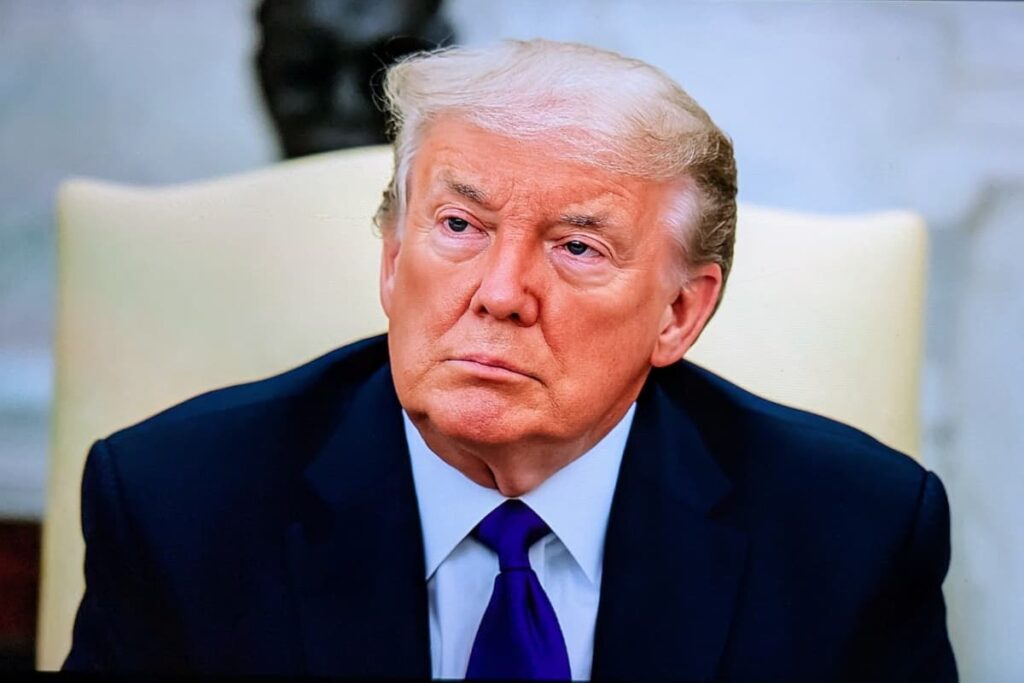Tensions Rise as Trump Weighs Military Action Against Iran
President Donald Trump is facing a critical moment as he considers whether the United States should join Israel in military action against Iran. At the heart of the discussion is a possible strike on Iranian nuclear facilities using powerful bunker-busting bombs. However, Trump’s top priority remains avoiding a prolonged or full-scale war in the region.
Despite increasing pressure from allies like Israeli Prime Minister Benjamin Netanyahu, who views U.S. involvement as essential to halting Iran’s nuclear ambitions, Trump is cautious. He remains unconvinced that intervention must escalate into a drawn-out military conflict. According to sources close to the administration, he is open to limited, strategic strikes but continues to evaluate the risks and potential consequences before making a final decision.
Behind the scenes, U.S. officials are analyzing whether any military action could be executed in a way that would disrupt Iran’s capabilities without sparking a regional or global escalation. The White House has so far adopted a “wait and see” approach, observing Israel’s initial progress before committing U.S. military assets to the conflict.
Calculating the Risks of a Strike
One of the major concerns for Trump’s administration is the possibility of retaliation by Iran. Officials and diplomats warn that any direct involvement by the U.S. could provoke Iran to target American bases in the Middle East or disrupt the Strait of Hormuz, a vital channel for the global oil supply. There is also fear that military action might accelerate Iran’s push for nuclear weapon development rather than deter it.
To address these risks, the U.S. military has begun contingency planning. While no final decision has been made, preparations are underway in case a rapid response is needed. Military leaders have requested additional resources to position American assets in strategic locations, aiming to support Israel while also protecting U.S. interests and personnel in the region.
Past actions are also influencing the debate. Some officials have pointed to the 2020 drone strike that killed Iranian commander Qasem Soleimani as a model. That operation was highly targeted and did not escalate into a broader war, and some in Trump’s circle argue that a similar approach could be used again—quick, effective, and limited in scope.
Still, others caution that today’s circumstances are different. Iran’s alliances, military readiness, and potential for asymmetric retaliation could turn a short-term strike into a longer conflict, drawing the U.S. deeper into a confrontation that many believe is not its war to fight.
Pressure from Allies and Military Leaders
Trump’s deliberations are influenced by a range of voices, including top national security officials and military commanders. Defense Secretary Pete Hegseth and CIA Director John Ratcliffe have played key roles in presenting options and intelligence to the president. Intelligence briefings in recent weeks have provided Trump with real-time assessments of Iran’s nuclear progress and potential countermeasures.
General Michael Kurilla, commander of U.S. Central Command, has also been vocal in pushing for increased military readiness. He has advocated for a buildup of assets in the region to support Israel and prepare for the possibility of an expanded conflict. His stance reflects a growing concern that the situation could evolve quickly and unpredictably, especially with regional actors like the Houthis potentially entering the fray.
Despite internal debates, Trump remains firm in his intention to avoid a long-term war. His focus, according to officials, is to ensure Iran does not acquire a nuclear weapon, without committing the U.S. to an open-ended military campaign.
Balancing Deterrence and Diplomacy
As the world watches closely, the Trump administration is navigating one of its most complex foreign policy decisions. On one hand, failing to respond decisively may embolden Iran. On the other, a military strike could trigger consequences that spiral out of control. Trump’s team continues to communicate with international allies, assessing the potential fallout of any U.S. action.
Within the U.S., opinions are divided. Some political allies urge restraint, expressing concerns about another conflict in the Middle East. Others support strong action, arguing that decisive military moves could end the threat swiftly and assert U.S. dominance on the global stage.
Trump is expected to wait until the last possible moment before announcing a final decision. Until then, the administration continues to explore every option—military, diplomatic, and strategic—to resolve the crisis in a way that neutralizes Iran’s nuclear ambitions without leading to another American war abroad.



